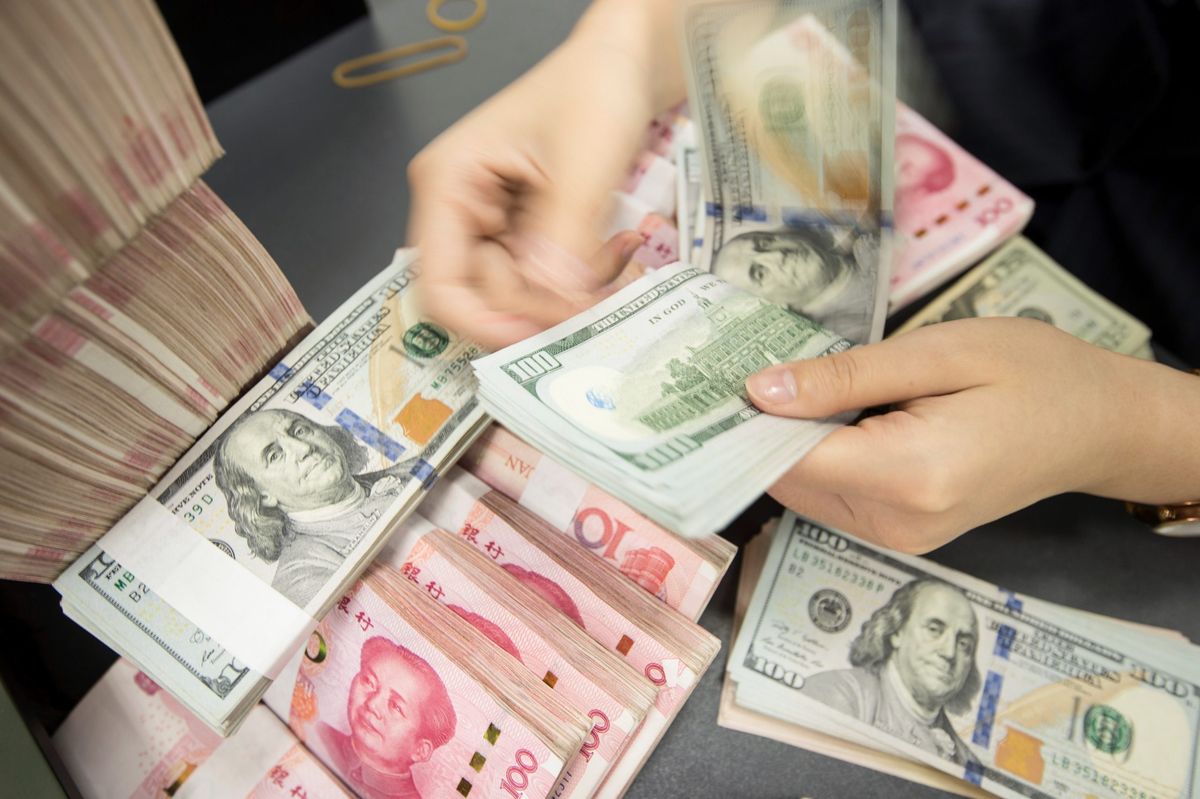Could China’s yuan displace the US dollar as the world’s primary reserve currency?

A few minutes every morning is all you need.
Stay up to date on the world's Headlines and Human Stories. It's fun, it's factual, it's fluff-free.
For generations, the global economy has relied heavily on the United States dollar as a reserve currency. This means that much of the flow of international investments, transactions and debt obligations are done through the exchange of the US dollar.
Following the rise of the US as the premier global power after World War II, the dollar became the preferred currency to hold in central banks across the world as US influence permeated international markets.
Now, with China’s rise to that of rival global power to the US, Beijing is reportedly making attempts to push for its currency, the yuan, to occupy a larger global role.
According to a recent report by Bloomberg, several influential voices in China have been publicly pushing for the yuan to play an expanded role, including Fang Xinghai, a top official at China’s securities regulator, Huang Yiping, a former adviser to the central bank, and Zhou Li, an ex-deputy director of a government body that manages foreign relations.
Currently, as per data released by the International Monetary Fund, the Chinese yuan makes up just 2% of global currency reserves, while the US dollar makes up 62% of reserve holdings. The second-highest currency in reserves is the euro, which makes up about 20% of the world’s total.
Will digitalization make an impact?
The US has continually sought to downplay any threats to the dollar’s hegemony.
“[The dollar] is by far the most dominant currency anywhere in the world, and it will always stay that way,” Trump tweeted in reference to the role of digital currencies, such as Facebook’s upcoming Libra project.
But with the rise of financial technologies and the possibility of currency digitalization in the coming decades, the rules and norms that underwrote global exchange in the late 20th and early 21st centuries could become significantly altered.
“The big battle for global financial supremacy could be between the digital yuan and Facebook’s libra dollar, a digital version of the U.S. dollar,” said Glen Goodman, a trader who gained attention for his successful management of assets during the 2008 financial crisis.
“Both of these currencies may be launched as soon as this year and will make it quicker, cheaper and more efficient to buy, sell or transfer money from place to place,” Goodman added, arguing that if China is able to attract enough investors to its digital currency for international transactions, “the U.S. dollar could be in deep trouble.”
China is currently in the test phase of implementing its digital currency and widespread use is likely still years away.
US-China tensions
As tensions between the US and China escalate amid the fallout over the coronavirus, the national security bill in Hong Kong, the case of technology giant Huawei, repression in Xinjiang and disagreements over Taiwan and the South China Sea (among other issues), some observers say that the bilateral relationship between the two countries is near an all-time low.
According to Chris Leung, the Executive Director and Chief China Economist of DBS Bank, a firm headquartered in Singapore, relations between the US and China could get even worse in the coming years.
Adding to the uncertainty is the ongoing trade disagreements between the two countries.
Although Beijing and Washington agreed to a “Phase 1” trade deal in December 2019, further talks stalled earlier this year.
More recently, the US Treasury Secretary, Steve Mnuchin, warned that there could even be a “decoupling” of the two countries’ economies if fair economic rules cannot be established and maintained between them.
While such talk may be little more than bluster, China’s continued dependency on the US dollar, both in its own currency reserves and through many of its economic transactions with other countries, should put the dollar at a continued advantage regarding its status as the top global currency – at least in the short to medium term.
“It’s not possible for China to have a significantly internationalized currency as things stand,” argued George Magnus, research associate at Oxford University’s China Centre.
“Today, the yuan is semi-pegged to the U.S. dollar. The arrangement serves as an anchor for China’s financial system, now the world’s largest by assets; for many currency systems in Asia and around the world,” he added in separate remarks.
Yuan’s rise?
Despite the dollar’s expected retainment of its position as the world’s leading currency in the coming years, some experts say the yuan is still poised to make gains against the dollar.
According to a 2019 UBS survey of major central banks and sovereign institutions, the US dollar should maintain its dominance as a global reserve currency, with the yuan developing into the third leading global currency behind the euro.
“In the end, what we think will actually happen over the next 25 years is that as we move on, we will have a world where we will have three important currencies: the dollar, euro, and renminbi [yuan],” said Massimiliano Castelli, the head of strategy and advice for global sovereign markets at UBS at the time of the survey’s release.
According to Castelli, the dollar should be able to maintain at least a 50% share in global reserves in 25 years’ time, with the euro holding 20-25% and the yuan maintaining 5-10% of reserves.
Have a tip or story? Get in touch with our reporters at tips@themilsource.com




Comments ()